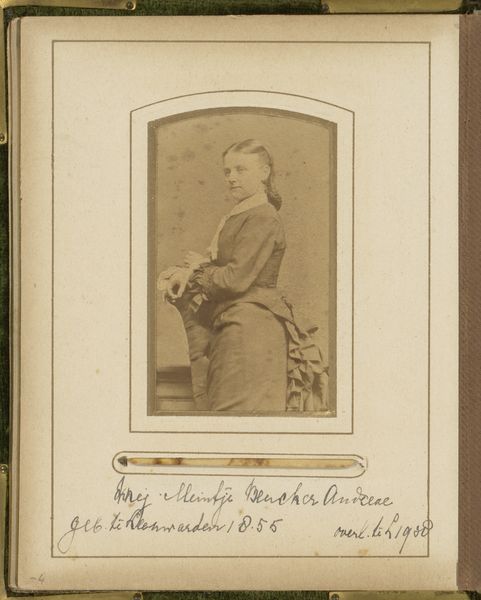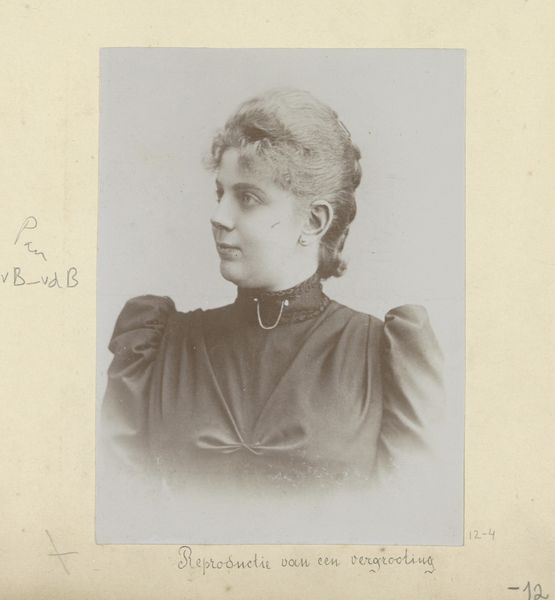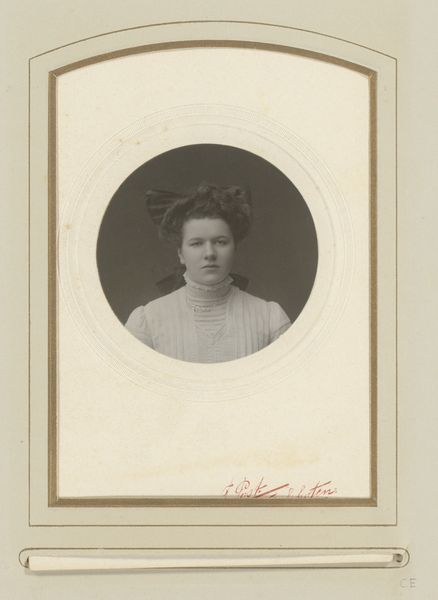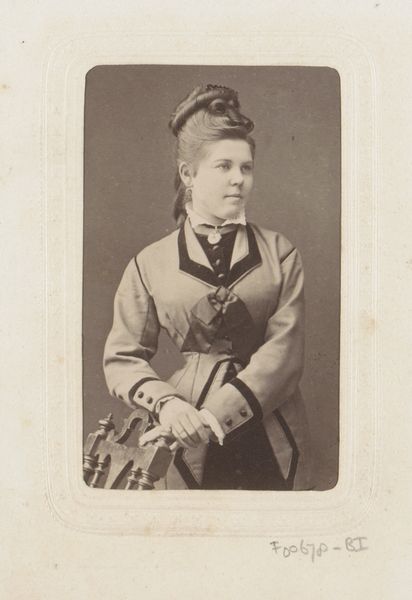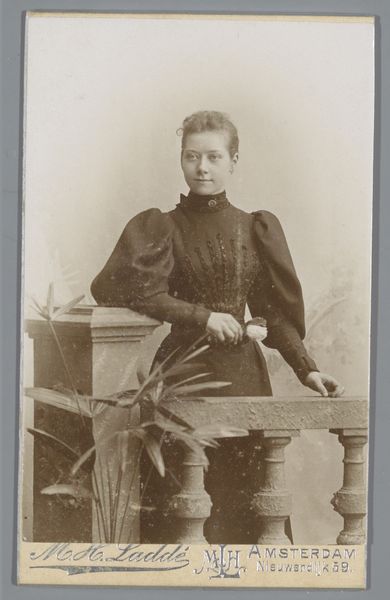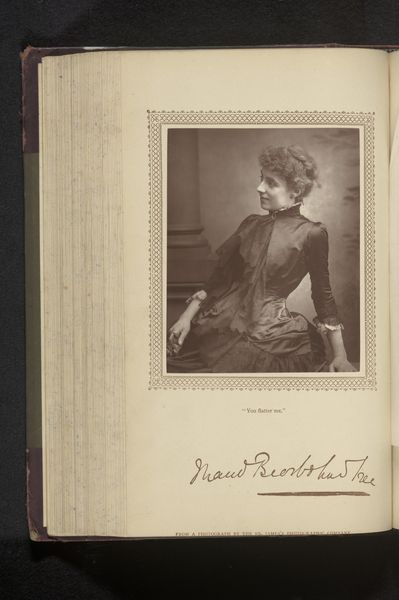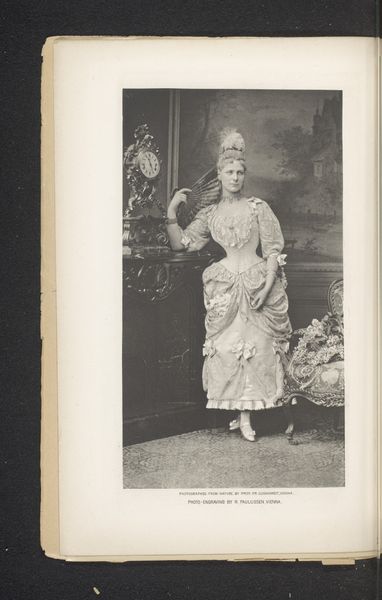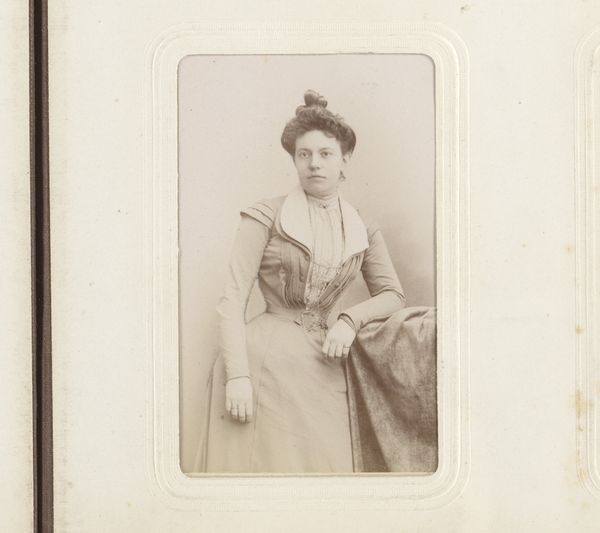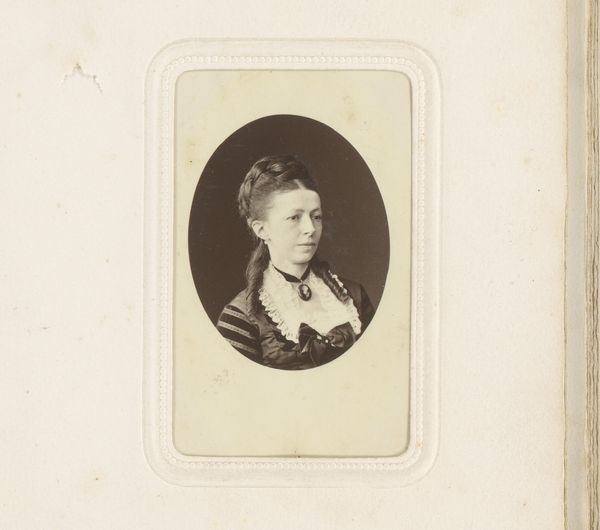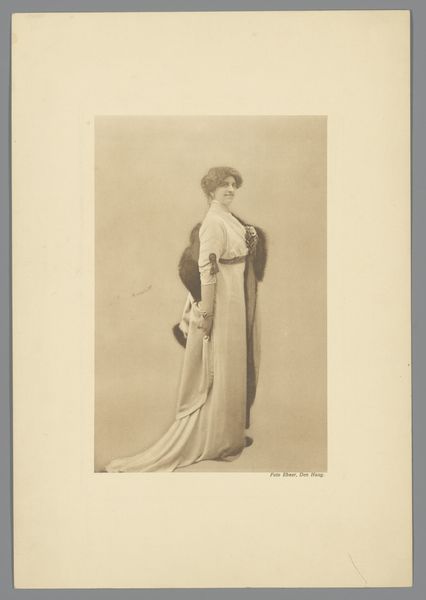
photography
#
portrait
#
photography
#
realism
Dimensions: height 145 mm, width 102 mm
Copyright: Rijks Museum: Open Domain
Curator: The image we are looking at is a photograph titled "Portret van Philippa Fawcett" taken before 1891 by Hugh Owen. Editor: The portrait has a delicate, almost melancholic feel. The soft grayscale tones emphasize the subject’s introspective gaze. It reminds me of a painting more than photography. Curator: Yes, the soft focus and lighting create a dreamlike quality, obscuring a precise time and place for viewing this important figure. Philippa Fawcett was a brilliant mathematician and educational administrator at a time when access to those fields were highly restricted to women. Looking at the portrait, I notice how Owen seems to be presenting a serious woman on the precipice of great intellectual contributions. Editor: Notice how the lines in her dress guide the eye, starting from the elaborate high neckline down the buttoned front to the simple black sash—anchoring the figure’s middle before releasing it to the modestly clasped hands. There is an interesting mix of adornment with structural precision, a parallel, perhaps, with her intellectual contributions? Curator: Precisely. She embodies the struggle for recognition and advancement that women face even today. Her achievements broke boundaries and provided pathways, influencing how we understand intellect and gender roles. And this very subdued photography shows the period’s restrictions that influenced Fawcett’s way of moving in the world. The portrait encapsulates not just an individual but a pivotal moment in gender and academic history. Editor: Ultimately, it's the balanced composition that holds my gaze. Owen uses tonality and subtle detailing to highlight a woman whose inner fortitude deserved to be seen and honored. I like how you see the constraints that actually affected the artist's creation of the image. Curator: And perhaps those same restrictions influenced her hands modestly placed in front of her. Thinking of the historical context reframes this piece, doesn’t it? Editor: Absolutely. It is like the image creates multiple layers for the viewer.
Comments
No comments
Be the first to comment and join the conversation on the ultimate creative platform.


